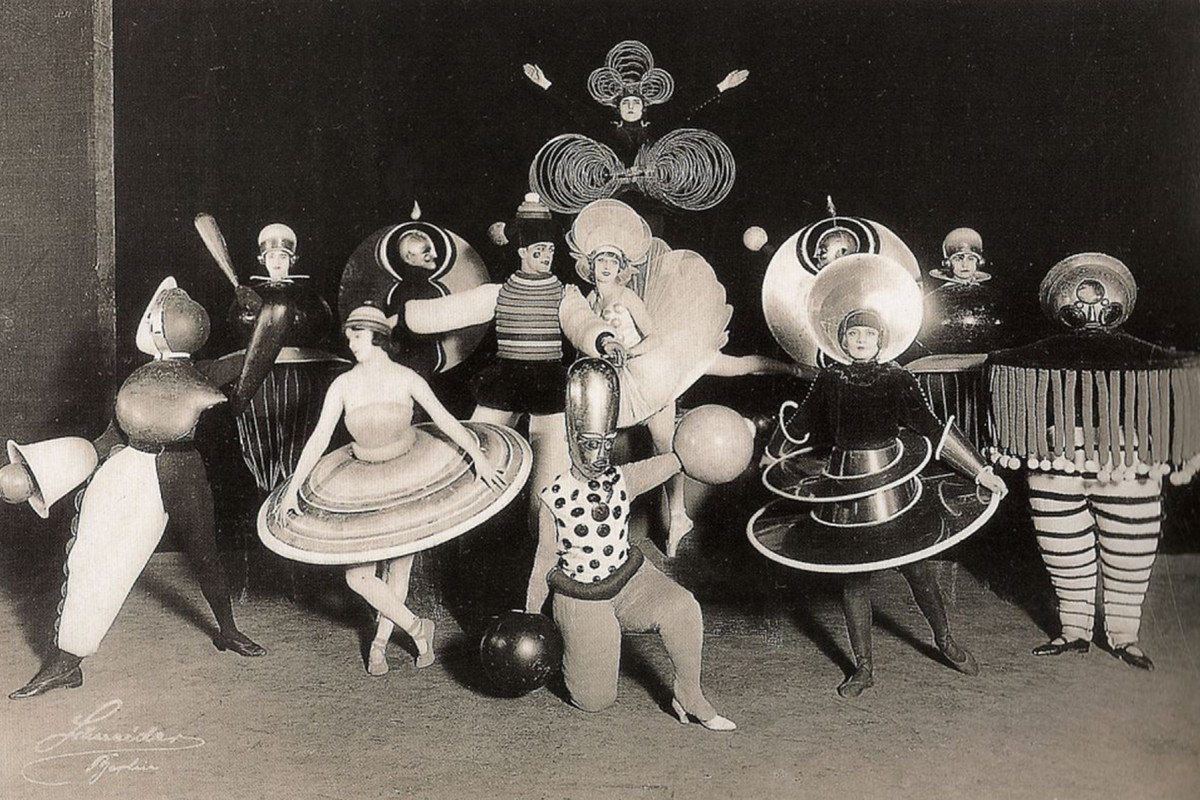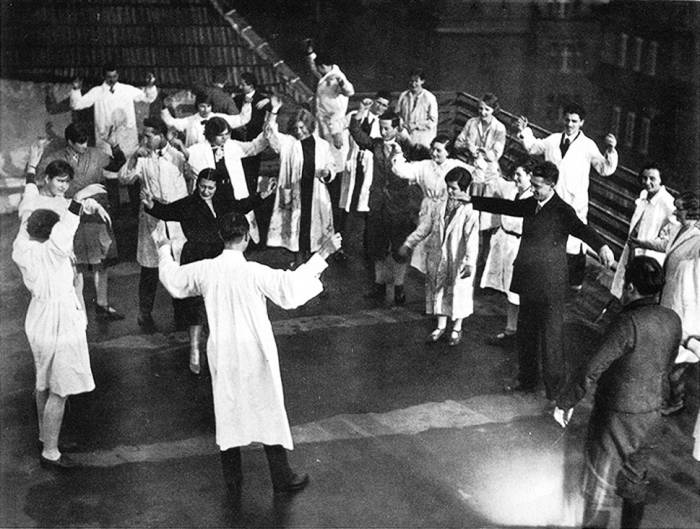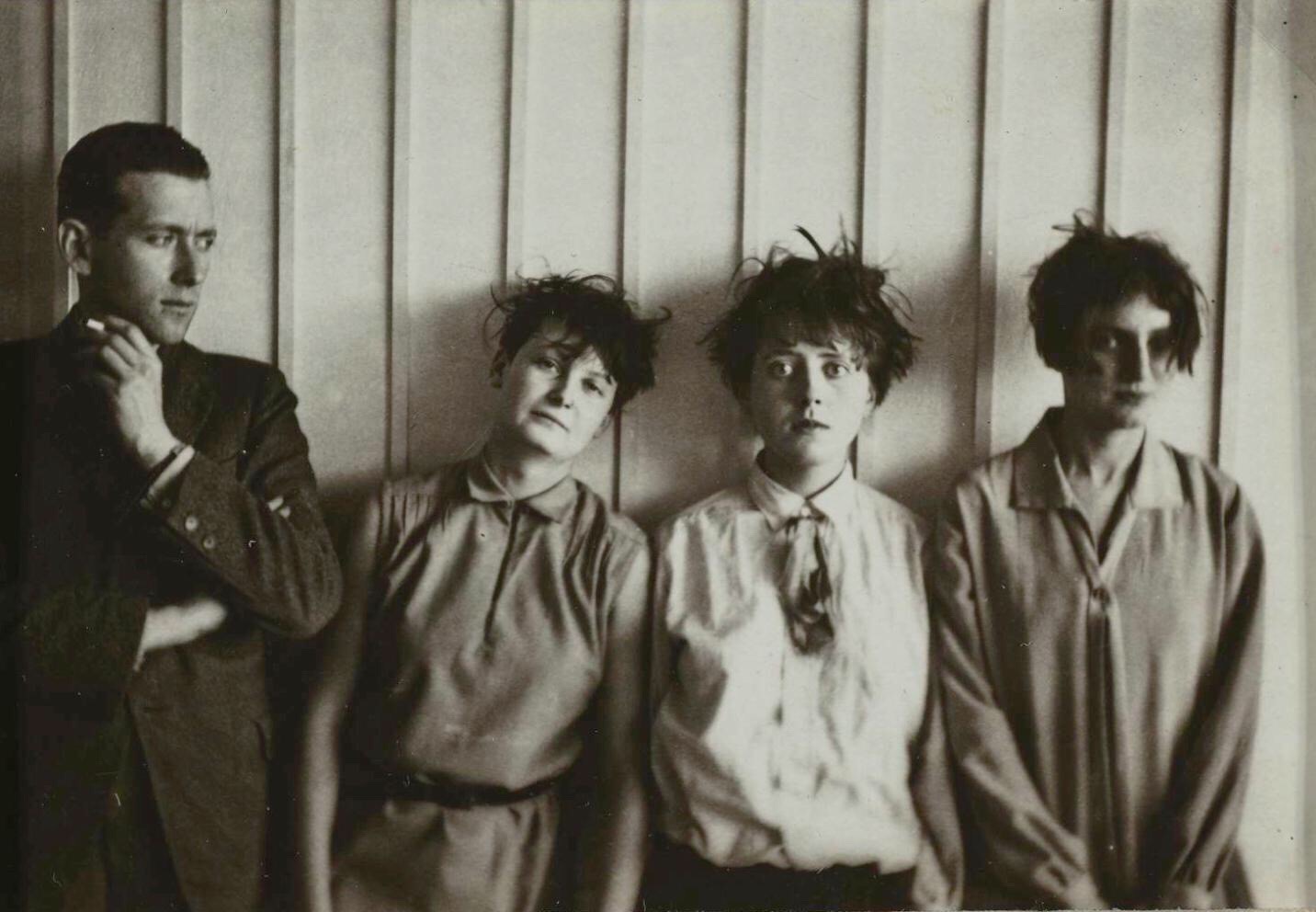Re-examining the Bauhaus
Perhaps the best side effect of the Bauhaus’s centennial — the famous German art school opened it’s doors in in Weimar in 1919 — is the opportunity to both re-examine the school and its influence while also acknowledging this history is much weirder than we sometimes like to admit. When I was sitting in my first design history class, now over a decade ago, and first learned about the Bauhaus, the narrative I was told was one of simple geometries, a precursor to modernism; an integration of theory and craft; the inventors of foundation courses.1 But to reduce the Bauhaus to such a simple — and such a mainstream — narrative is to dismiss the diversity, absurdity, and experimentation that happened in its short run.
Nikil Saval, wrote a great — and fairly comprehensive — history of the school for the New York Times T Magazine earlier this year:
The Bauhaus was founded in 1919, when the already renowned architect Walter Gropius took over the Grand Duccal Academy of Art and the School of Applied Arts in Weimar, rechristened the combined institution the Bauhaus and turned it into a force for artistic and architectural Modernism, bringing together the visual artists Paul Klee, Josef Albers, Wassily Kandinsky and Lyonel Feininger; the textile artists Gunta Stölzl and Anni Albers; and the painter and theater designer Oskar Schlemmer. Hidden in the folds of this fairly straightforward history is an enormous variety of activities that went on under the name Bauhaus: controversies and internal dissent, party going and occult happenings, affairs and fights and struggles simply to maintain the school’s financial existence in one of the most tumultuous periods in the history of Germany. Gropius, a man of military build and significant reserve — his ex-wife, Alma Mahler, wrote to him, “Your beautiful male hardness is a wall around you” — emphasized collective work but preserved medieval hierarchies: In the manner of a guild, there were various ranks of “masters.” When Gropius introduced an architecture course led by Hannes Meyer in 1927, women were steered away from taking it, and overall, they were largely segregated in the textile classes.
Saval continues:
While “Bauhaus” became shorthand for functionalist architecture, an identikit style of angular, boxy white buildings and ribbon windows, there were, in fact, many different Bauhauses that existed during the school’s short life span, and even more so in its afterlife. What made for its vitality was the sheer number of movements for which the Bauhaus provided temporary shelter: Expressionism, functionalism and — as the Nazis correctly surmised — Communism. Many came to the Bauhaus because they wanted to refound the world, from the pot in which you brewed your tea to the painting you hung on your wall to the housing complex that you lived in and the street that you walked on. Only a few buildings emerged from the brains on campus. More common were the designs for typefaces, furniture, flatware: a planned revolution in the texture and feel and look of everyday life. Gropius would speak of a “new unity,” first of craft and fine art, later of art and technology, the ultimate aim being the building as a Gesamtkunstwerk, or total work of art (he would later call this “total architecture”). It was a school that was also — unusual for Germany — a campus: a place where students and teachers came to live. It was meant to embody the life that its teachers and students were also expected to make available to the world.

Darran Anderson also wrote a pair of pieces for CityLab, one on how the the school kept the Nazis at bay and another on the weirdness of the early Bauhaus:
The early Bauhaus was much stranger—and Expressionist—than often thought. Its manifesto encapsulates this with its triumphant radiating “Cathedral of Socialism” woodcut illustration by the Bauhaus’ first teacher Lyonel Feininger and Gropius’s near-religious zeal in its text. With a degree of romanticism, Gropius looked back to Die Bauhütten medieval guilds, how they worked together to create Gesamtkunstwerk (total works of art from the spire to the stained glass to the door handles), like the Gothic cathedral in his manifesto, and lamented the barriers that had since been artificially put up between the arts and the crafts. The Bauhaus would be an attempt to resurrect this spirit for the new modern age.
The teaching staff, a line-up of idiosyncratic avant-garde misfits that Gropius assembled, seem initially to have been woefully miscast for this challenge. There was the spiritual shaven-headed Johannes Itten who followed the ancient Persian fire cult called Mazdaznan, built a long-lost stained glass “Tower of Fire” in 1920, and encouraged his pupils to meditate and purge themselves through self-discipline. There was Feininger, formerly a pioneering comic book artist in the U.S., who specialized in mysterious woodcuts and paintings of atmospheric angular street scenes populated by desolate figures and tumbledown buildings dissolving into geometric shapes. Alongside them was the quixotic Swiss artist Paul Klee, whose near-mystic work seemed built from the flotsam of childhood, dreams, folklore, and the unconscious, and the Russian Wassily Kandinsky whose kaleidoscopic landscapes and cityscapes had gradually disintegrated and radiated into other worlds of abstraction. They worked supremely as teachers. Even before the Bauhaus existed, Kandinsky had written—in sentiments that chime with Gropius—of “breaking down the walls between the arts…. and [to] finally prove that the problem of art is not a problem of form but a problem of spiritual content.”

Max Holleran, in The New Republic, looked at the teaching of Walter Gropius and his desire to create a utopian art colony and the sexual freedom at the school:
As Gropius dove into the project of Bauhaus, his relationship with Alma started to fall apart. They had married in 1915, but by 1920 they were separated. Gropius took many lovers, some casually, some less so: One was a student, another was married, most were involved in the arts. He was idealistic about his newfound sexual freedom, writing in a long and turgid letter to the poet Maria Benemann: “I know no anchor, no chains…. You wanted me and I gave myself to you and it was beautiful and pure.” After he married Ise Frank in 1923, he continued to pursue an unconventional lifestyle. Ise had an affair with Gropius’s friend and colleague Herbert Bayer, a Bauhaus graphic designer, and, although displeased at first, Gropius came to accept it. He maintained a close friendship with Bayer, vacationed with him and Ise, and even received cheery postcards co-signed by them from their extramarital ski outings. For Gropius, as MacCarthy documents, this kind of openness was vital to the Bauhaus spirit of experimentation. It was necessary to subordinate individual jealousy to the needs of a broader, chosen community.
In Curbed, Alexandra Lange writes biographies for six women who were influential, yet largely overlooked in history books (until recently!) at the Bauhaus:
As Sigrid Wortmann Weltge writes in the introduction to her book Women’s Work: Textile Art from the Bauhaus, female students “arrived at the school with an astonishing diversity of talents, convinced that this avant-garde institution would accept them as equals.” Alas. Many of these students had already studied art elsewhere—and they were eager to learn from masters like Paul Klee, Wassily Kandinsky, and László Moholy-Nagy—but “they were segregated and given their own workshop, the Weaving Workshop, regardless of talent or inclination,” Weltge writes.
Initially, female students far outnumbered men; the administration soon instituted quotas in order to better balance the classes. After completing the first-year co-educational foundation course, women were shunted into weaving, while men could choose sculpture, metalwork, graphics, photography, stagecraft, and other fields which ebbed and flowed over the school’s history. Each workshop was led by a so-called “master,” and former students like Marcel Breuer (furniture) and Herbert Bayer (graphics) eventually became junior masters. Of course, many women flourished there! A photograph of Bauhaus masters taken that year on the roof of the Bauhaus building shows 12 men and one woman—Gunta Stölzl, weaving master.

And for a bit of self-promotion. I first started thinking seriously about these alternative histories about six months ago when I got a commission from MIT Press to design Haunted Bauhaus: Occult Spirituality, Gender Fluidity, Queer Identities, and Radical Politics by Elizabeth Otto, due out later this year. Elizabeth writes about the spirituality, mysticism, and sexuality that is often missed in our mainstream retellings of the Bauhaus. When I first started talking to Elizabeth about the book and the design for it, I was thrown off by the images she brought and recommended for covers — this was not the Bauhaus I knew! As I worked on the book, I found myself drawn to the narrative Otto was unspooling — an alternative history of a school it turns out I knew very little about.
-
When I started teaching, I, admittedly, fell back on similar narratives when I’d lecture on the Bauhaus. I understand why I was taught that and why I’d continue it: it’s easy. We want history to easy — narratives that make sense, are linear, and lead from one thing to the next. But history, of course, and design history, is never quite that clean. ↩
